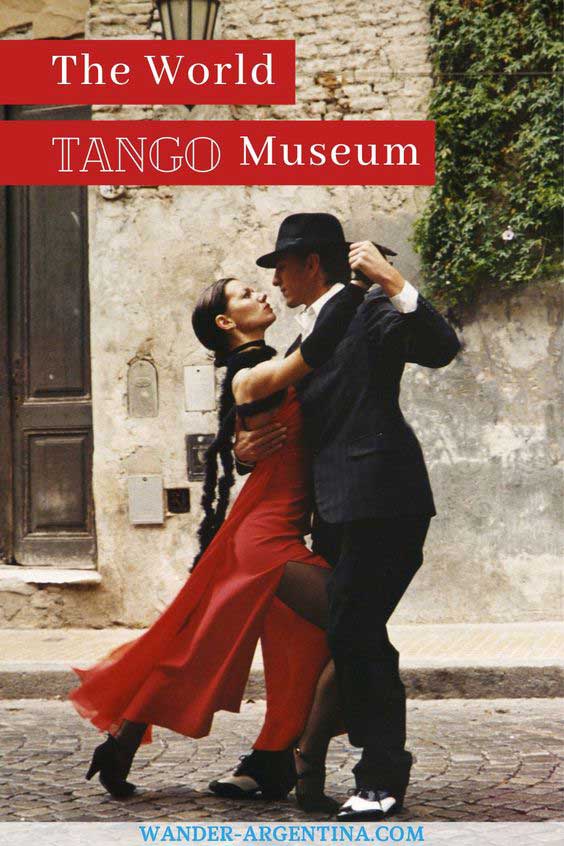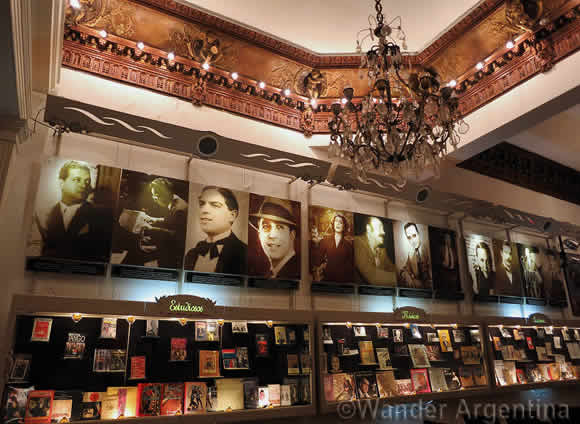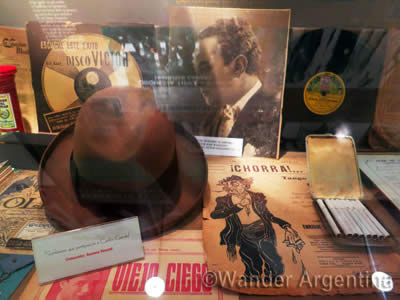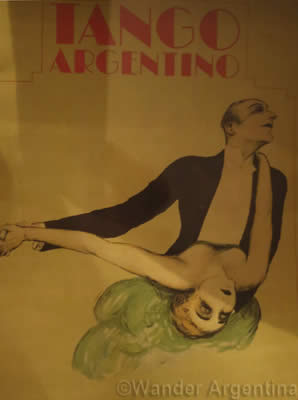The World Tango Museum, right above the illustrious watering-hole, Café Tortoni is a point of interest that is saturated with Argentine history, but often overlooked by visitors to the cafe.
Sponsored by the National Academy of Tango, El Museo Mundial del Tango provides a comprehensive overview of Argentina’s most cherished artistic export.
Founding the museum was a labor of love for prolific tango lyricist, Horacio Ferrer (who used to hang out in many of the Buenos Aires cafes —not only the Tortoni but more modest places such as such as La Poesía)
→ Check out Tango Shows & Activities in Buenos Aires
The Tour: Inside the World Tango Museum
The 1880’s mansion on Avenida de Mayo recalls Buenos Aires’ own Belle Époque, with details such as a wrought-iron elevator, ornate ceilings and antique chandeliers.
Comprised of only a few rooms, the museum can be separated into three distinct sections.
The first contains chronologically-arranged glass cabinets that explain the evolution of the tango from its early roots in the 1850’s until today.
Each ‘tango time capsule’ covers a span of fifteen years, with a detailed history of the dance in that time period and artifacts of the era.
This part of the exhibition is loaded with information (in Spanish) but visitors may be distracted by the abundance of memorabilia in the cabinets, including a dilapidated pair of dancing shoes from the 1920’s or one of the token fedoras worn by tango’s golden boy turned tragic hero, Carlos Gardel.
After the journey through tango’s history, visitors can make their way into the hall of tango’s legendary figures. This room in the museum serves as a tribute to the creators of the tango, including famous singers, dancers and lyricists.
Relics include records, photographs and clothing. Overlooking the space are the faces of tango’s greatest names in large black and white posters.
Occasional performances by local tango legends and up-and-coming players take place at a small stage at the end of the hall.
Since its birth in the dim street corners of La Boca, the tango has inspired artistic expression in every part of Argentinean culture.
The tango museum’s final section pays homage to tango’s influence on other arts such as poetry, theater and cinema.
Here visitors can see a mélange of objects ranging from colorful paintings, sculptures, and sketches to antique instruments, including Argentine composer Agustín Bardi’s piano.
For those looking for a more hands-on way of learning about the tango, The National Academy of Tango offers dance classes for students of all levels. — Valerie Sarron
El Museo Mundial del Tango
Av. De Mayo 833 1 piso
Buenos Aires
Tel: 4345-6967/68
• Museum Hours:
Mon – Fri: 2:30 p.m. – 7:30 p.m.
-Entrance: $
-Wednesdays free for seniors and students with I.D.
• Tango Class Hours:
Mon-Fri: 3:00 p.m. – 6:00 p.m.



